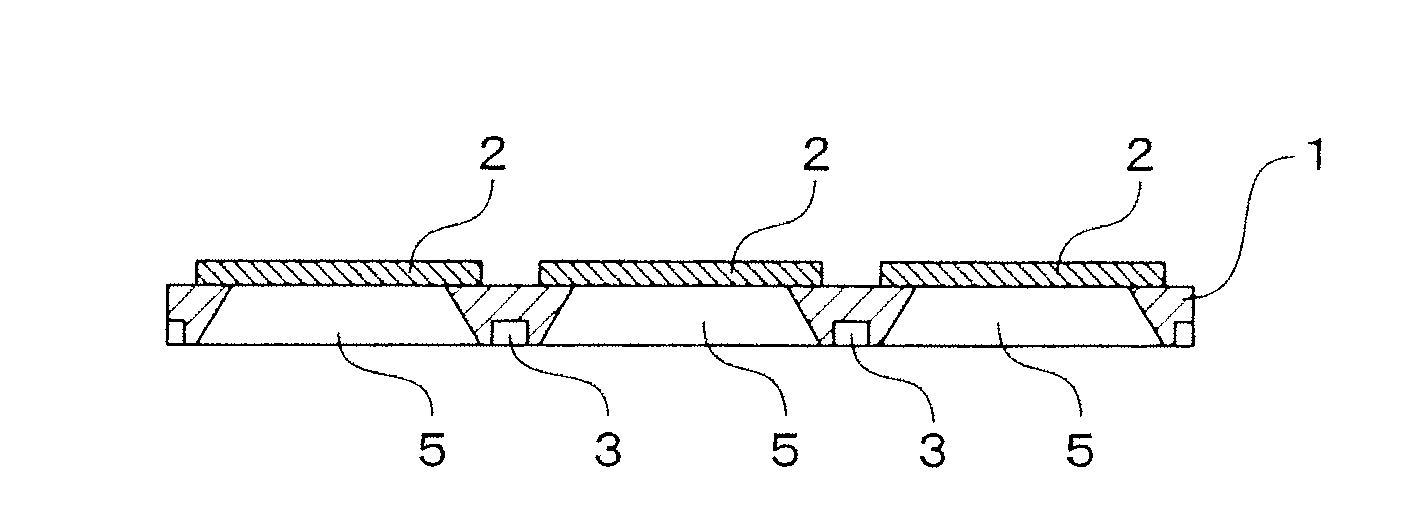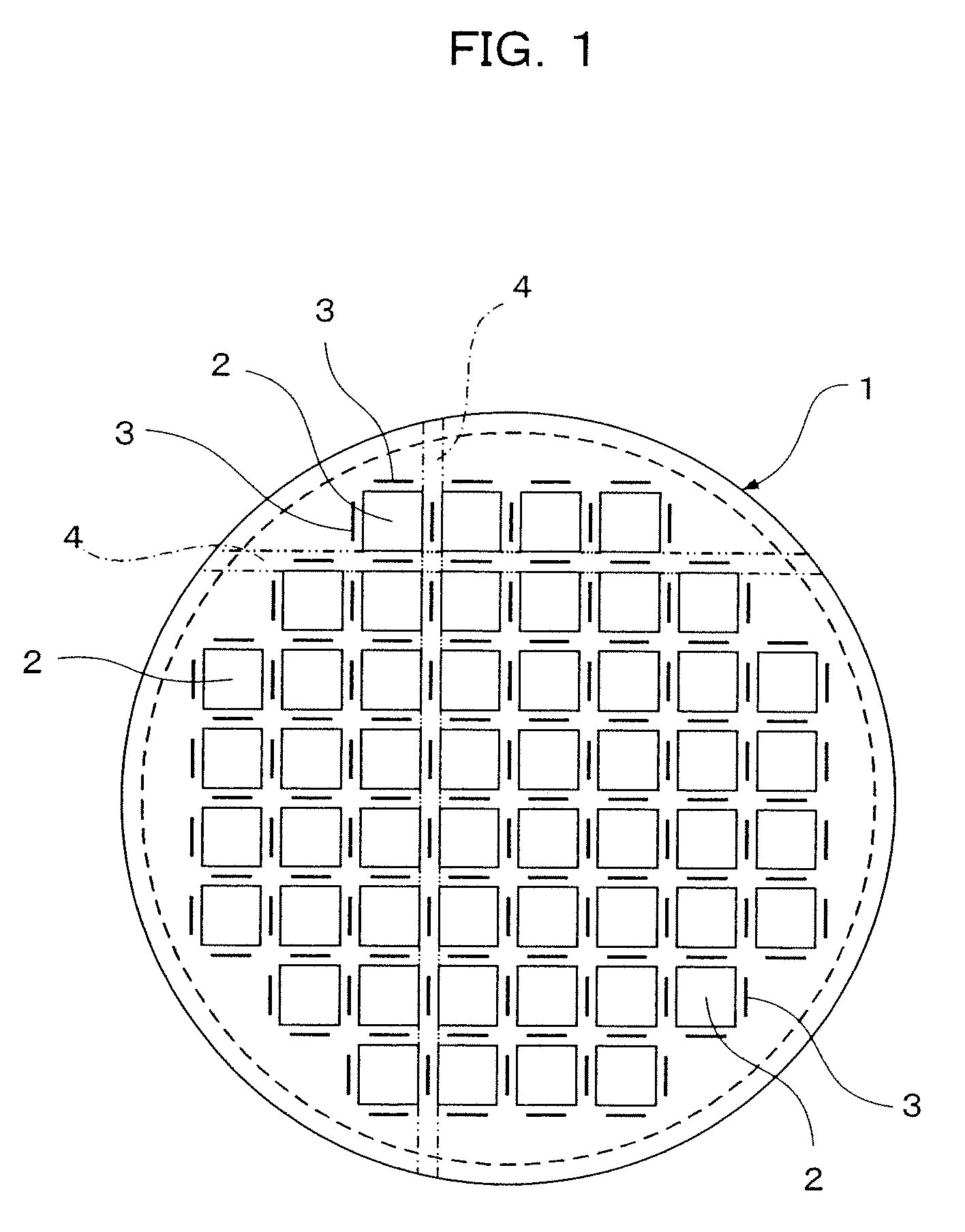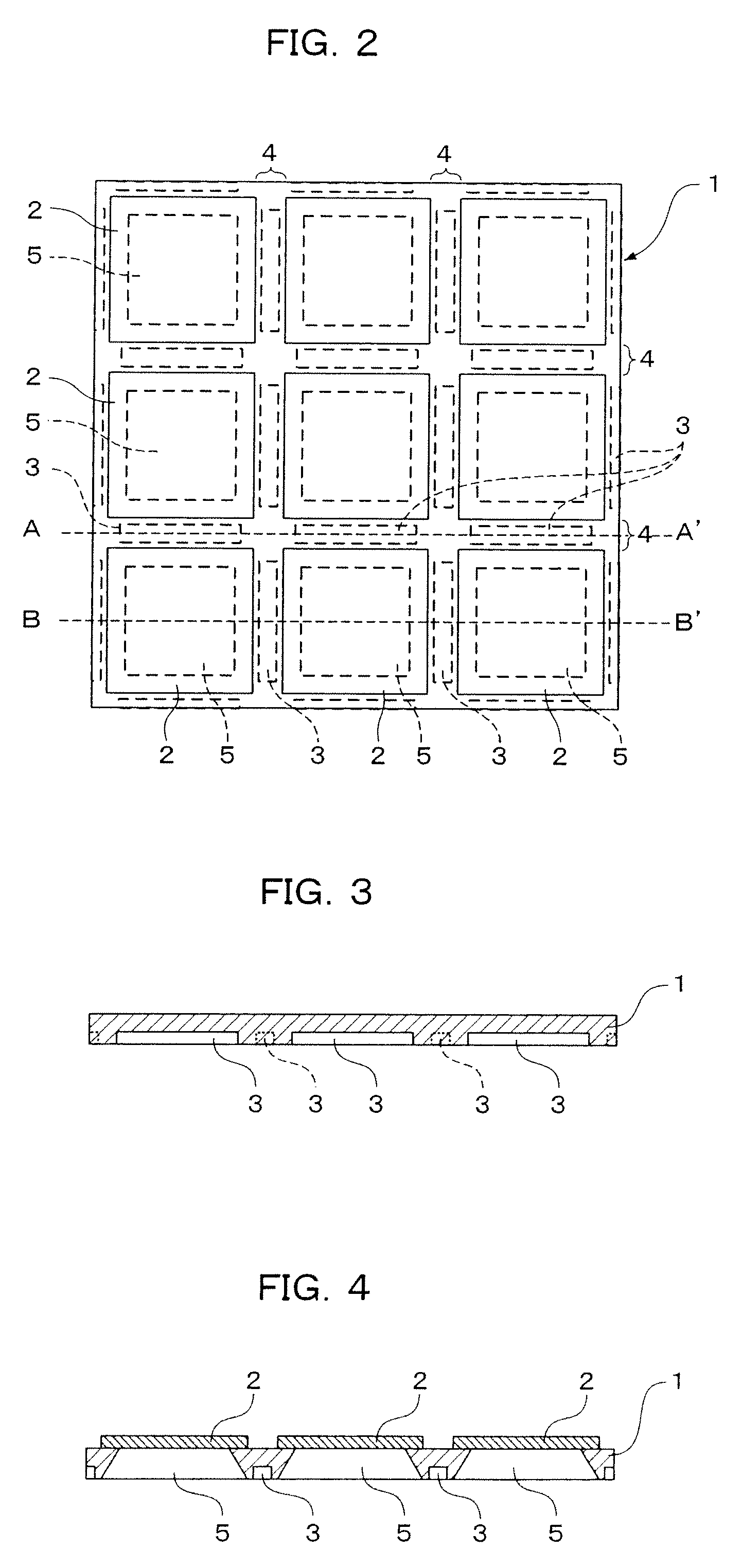Semiconductor substrate
a technology of semiconductors and substrates, applied in the field of semiconductor substrates, can solve the problems of excessive etching of intersecting portions of v-grooves, affecting the quality of separation, and destroying structures, so as to improve process takt and reduce separation quality
- Summary
- Abstract
- Description
- Claims
- Application Information
AI Technical Summary
Benefits of technology
Problems solved by technology
Method used
Image
Examples
Embodiment Construction
[0037]An embodiment of the present invention will now be described with reference to the drawings.
[0038]In FIGS. 1 to 4, a semiconductor substrate 1 is made up of Si monocrystals, and a plurality of semiconductor elements 2 in which functional elements are constructed are formed in a grid pattern on one of the faces of the semiconductor substrate 1. The portions of the semiconductor elements 2 become diaphragm pressure sensors (semiconductor devices) after separation. As such, the semiconductor elements 2 themselves are made thin so as to become sensing sections, while depressions 5 are formed on rear face-sides of the semiconductor elements 2, constituting diaphragm structures. An example of such a diaphragm pressure sensor is a microphone sensor, in which air vibrated by sound vibrates a diaphragm, and the displacement of the diaphragm varies the capacity of a conductor between a receiving-side diaphragm and a vibrating-side diaphragm to convert the sound into a vibrational freque...
PUM
| Property | Measurement | Unit |
|---|---|---|
| inclination angle | aaaaa | aaaaa |
| thickness | aaaaa | aaaaa |
| thickness | aaaaa | aaaaa |
Abstract
Description
Claims
Application Information
 Login to View More
Login to View More - R&D
- Intellectual Property
- Life Sciences
- Materials
- Tech Scout
- Unparalleled Data Quality
- Higher Quality Content
- 60% Fewer Hallucinations
Browse by: Latest US Patents, China's latest patents, Technical Efficacy Thesaurus, Application Domain, Technology Topic, Popular Technical Reports.
© 2025 PatSnap. All rights reserved.Legal|Privacy policy|Modern Slavery Act Transparency Statement|Sitemap|About US| Contact US: help@patsnap.com



